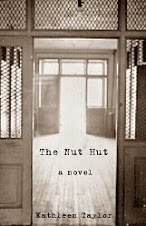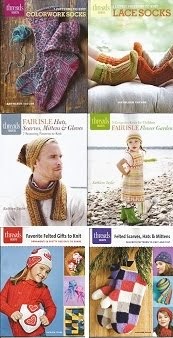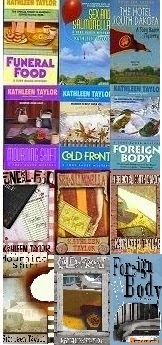






Well, not really the end- we now have 24 bottles of lovely, crystal clear, home-made Rhubarb Wine to drink or gift or just look at. But the creation cycle of this wine is over.
This batch was started on 01-30-06, using frozen rhubarb that we harvested from assorted patches (we didn't steal the rhubarb, though I might not have been above doing that if I needed some). The 5 gallons was put in the carboy (the big glass jug) for the last settling somewhere around 03-06, and there it sat. We sort of ran out of winemaking energy, and never got around to bottling it.
But we've been thinking about starting some wines again (and in fact, did start a Riesling yesterday, which I will detail in a separate post), and that reminded us that we had to bottle the ancient Rhubarb (which has mellowed very nicely, though it's still a bit tart for my taste- fruit wines are often sweetened, and we used to use simple syrup for the sweetener, but now we'll use Splenda, added to the glass, not the bottle, if need be). Rhubarb wine is a lovely base to mix with other wines for coolers.
Anyhoo- here's the process: Sterilize all equipment by washing with soap and hot water, and then spraying with a food-safe no-rinse sanitizer.
Place the carboy (this one is 5 gallons) of wine carefully on a table or other surface. Jostle as little as possible, so as not to stir up the sediment in the bottom of the carboy (there wasn't much, given that this wine is nearly 3 years old, but younger wines can have quite a lot).
Rack the wine into the bottling bucket with a very handy siphon (no sucking required... snort).
The bottles are washed and then sanitized with this extremely handy bottle sanitizer. It squirts the solution up into the bottle, which is then hung on a peg to drain. At the same time, corks are put in more sanitizing solution to soak.
The bottle is then filled from the spigot on the bottling bucket, put in the floor corker (of all the *extra* wine making equipment, this one is the best- corking bottles is He-Man stuff, even for my carpenter husband. The floor corker makes short work of an otherwise onerous task), and the cork is inserted.
The bottles are then washed, labeled (I found a cool sheep graphic somewhere online for this label and printed it on 2" x 4" stickers), and artfully arranged for a picture. And of course, we drank a glass. Yummy.
After 24 hours upright, to allow the cork to seat properly, the bottles will be stored upside down in cases (or tilted in our wine cabinet in the basement). Ready to serve whenever we want.
Time to make the wine: almost 3 years (though under ordinary circumstances, about 3 months). Expense: the rhubarb was free, the yeast was $1, the sugar was probably $5, the other ingredients (acid blend, yeast nutrient, sulfites) maybe .50 for the entire batch. The bottles are reusable, so I won't count that expense- so these 24 bottles of wine cost about $6.50 Total.
Can't beat that. Next up- the start of the Riesling.
Winemaking ingredients and equipment and kits available here: Northern Brewer http://www.northernbrewer.com/









2 comments:
Beautiful wine, and the bottle label looks so very Professional!!
Mona
Oh my gosh! I love rhubarb and I covet your wine! homemade is always the best.
Post a Comment